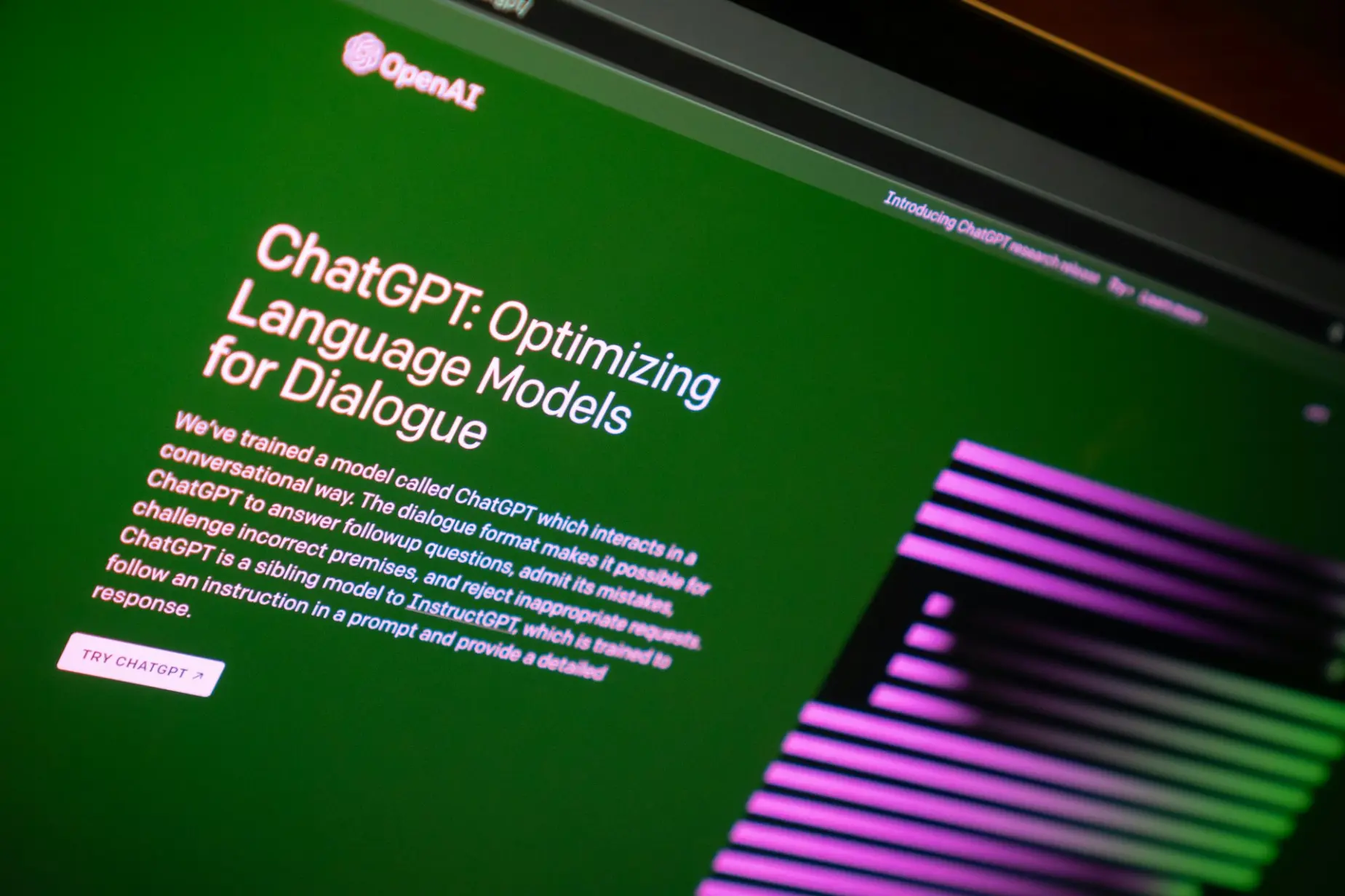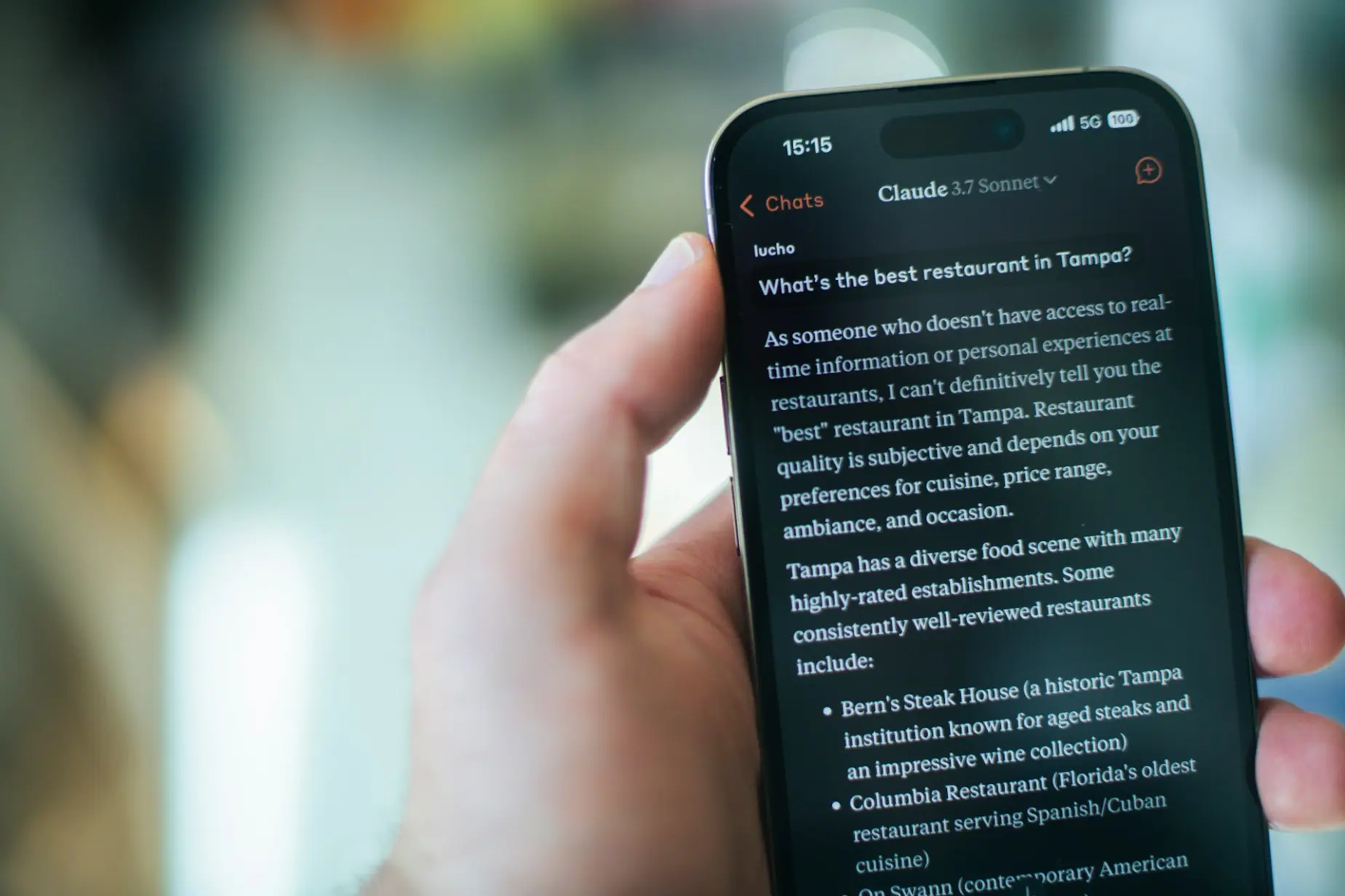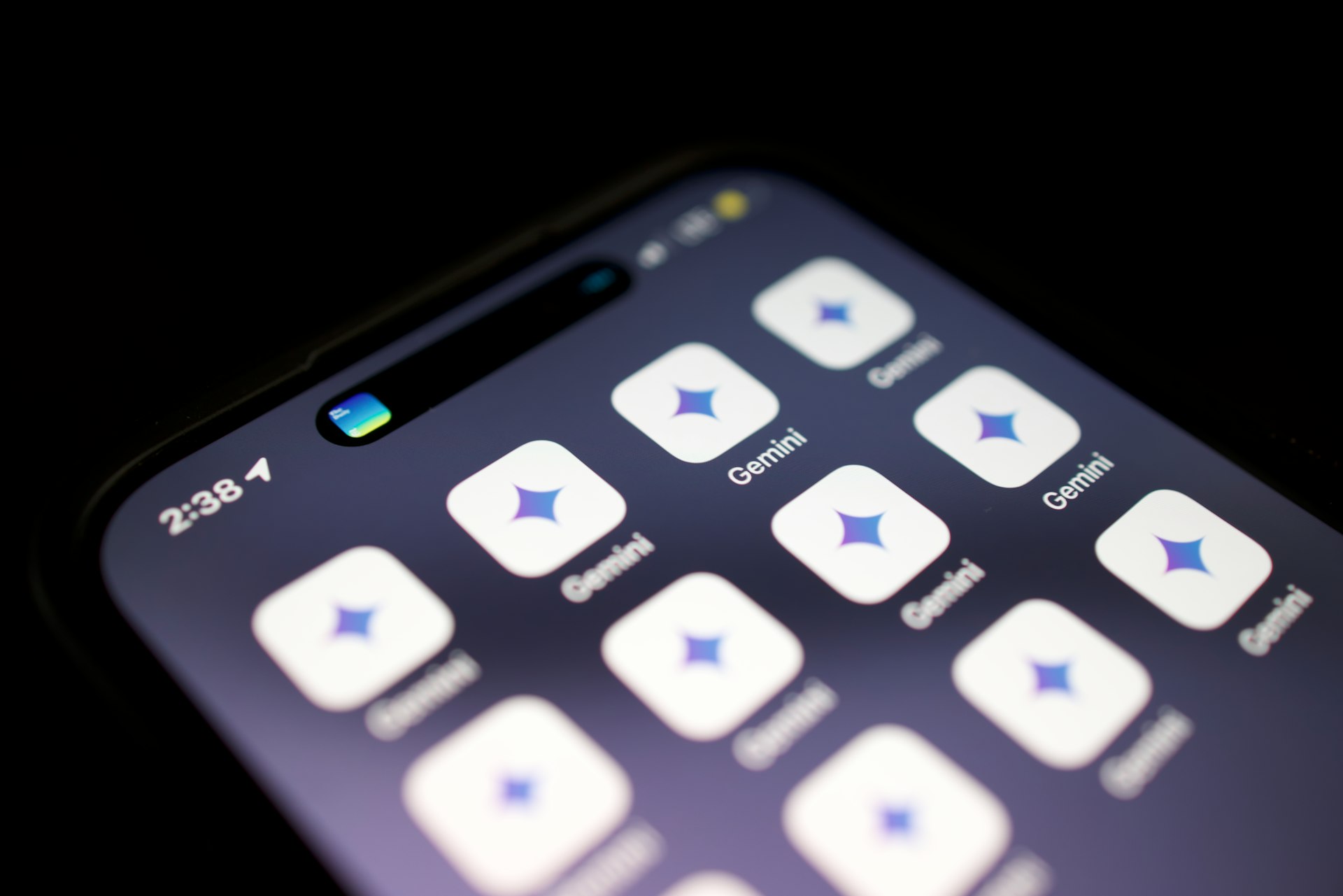Best AI Chatbot Showdown 2025: I Tested 12 and Found The Clear Winner
Finding the best AI chatbot in 2025 can feel overwhelming with so many options available. I rigorously tested 12 of the most popular AI chatbots to determine which ones truly deliver value for different needs. After countless hours of evaluation, ChatGPT emerged as our Editors' Choice winner, providing the most accurate and detailed answers compared to all other chatbots tested.
While all the AI chatbots I evaluated offer free versions, paid plans typically start around $20 per month, which has become the standard pricing for premium chatbot subscriptions. Additionally, our team regularly tests, rates, and reviews more than 1,500 products annually to help you make better technology decisions. In this comprehensive comparison, I'll share which top AI chatbots excel at specific tasks like coding, content creation, and research, so you can choose the perfect AI assistant for your unique needs.
What Makes a Great AI Chatbot in 2025
In 2025, what separates the truly great AI chatbots from mediocre ones comes down to four critical factors. After extensive testing, I've found that users now expect AI assistants to not just work, but to excel across multiple dimensions simultaneously.
Speed and accuracy
The modern AI chatbot must balance rapid responses with factual reliability. Conversational AI chatbots that operate 24/7 with instant responses significantly reduce wait times and improve customer satisfaction. When evaluating chatbot accuracy, the most reliable systems achieve at least 90% accuracy in understanding user intent. Notably, advanced systems like Teneo have reached an impressive 99% accuracy rate in understanding user intent, outperforming human comprehension typically estimated at 90%.
Furthermore, accuracy can be broken down into several components, including factual correctness, intent recognition, response relevance, and completeness. Without access to up-to-date information, even sophisticated chatbots can produce AI hallucinations—plausible but unsubstantiated responses that damage credibility.
User interface and experience
A great chatbot interface must be intuitive and friction-free. According to user experience research, the most valuable UI elements include welcome messages, quick-reply buttons, suggested replies, and chat history accessibility. The visual design should reflect your brand while maintaining clarity—88% of people have used chatbots, yet the interface should still make each step obvious.
For optimal UX, chatbots need to guide users through conversations with clear paths forward. The most effective bots combine text inputs with visual elements, as users complained when forced to type rather than select options. Additionally, owning failures and offering escape hatches (like phone numbers or live agent transfers) are perceived favorably by users.
Integration with other tools
The best AI chatbots in 2025 connect seamlessly with your existing technology ecosystem. Integration through APIs acts as a middle layer that determines what can be done with the system, providing the right access to write data and controlling how tools interact. This connectivity allows chatbots to access customer data, perform transactions, and interact with other systems without friction.
Consequently, when integrated with CRM systems, marketing platforms, and analytics tools, chatbots deliver enhanced productivity by automating routine tasks and streamlining workflows. The most valuable integrations include messaging platforms like WhatsApp and Slack, lead generation tools, and customer service systems.
Support for different content types
Finally, a superior AI chatbot must handle diverse content formats. Modern AI systems can process multiple inputs simultaneously, including text, voice, and images. Voice-enabled chatbots provide hands-free solutions and break accessibility barriers, with advanced systems offering real-time transcription and translation capabilities.
Likewise, chatbots with multimodal capabilities create more engaging user experiences by combining different content types in a single interaction. The ability to understand and generate various content formats makes chatbots more versatile problem solvers across industries from healthcare to customer service.
How I Tested the 12 AI Chatbots
To systematically evaluate the best AI chatbots of 2025, I developed a comprehensive testing framework that pushed each platform to its limits. My evaluation went beyond surface features to examine how these AI tools perform under real-world conditions.
Task-based evaluation method
Initially, I created a standardized set of tasks for each chatbot to complete. This approach mirrors how chatbot testing professionals evaluate conversational AI performance. For each platform, I tested its ability to understand different phrasings of the same request, including intentional misspellings and industry-specific terms. This allowed me to assess how well each chatbot recognized user intent – a critical factor since most chatbots struggle with comprehending what users actually want.
Throughout the testing process, I documented each chatbot's responses, examining both common queries and edge cases. This methodology revealed significant performance differences, as even advanced chatbots occasionally failed to grasp complex requests or multiple intents expressed simultaneously.
Scoring criteria: accuracy, creativity, speed, UI
For scoring, I established a multi-dimensional evaluation framework based on four key metrics:
- Accuracy: I measured factual correctness and response relevance, verifying information against reliable sources. This criterion examined each chatbot's ability to provide correct answers without "making up" information.
- Creativity: I evaluated each platform's ability to generate original content, solve problems creatively, and provide thoughtful responses beyond templated answers.
- Speed: Response time was measured under various conditions, including complex queries and concurrent usage scenarios.
- UI Experience: I assessed interface usability, conversational flow, and overall user experience across devices.
Based on the confusion matrix approach used in academic research, I classified responses as true positive (correct answers), false positive (incorrect but confident answers), true negative (correctly acknowledged unknown information), and false negative (incorrect "I don't know" responses).
Real-world use cases
The final component involved testing each chatbot across practical scenarios, including:
- Customer support inquiries and complaint resolution
- E-commerce assistance with product searches and recommendations
- Information retrieval for research questions
- Complex document analysis and summarization
- Creative content generation for marketing
This approach revealed how chatbots perform in specific contexts rather than just general capabilities. The highest-performing platforms consistently delivered value across multiple use cases, whereas others excelled in specialized applications but underperformed elsewhere.
ChatGPT: Best Overall AI Chatbot

After thoroughly testing all the competitors, ChatGPT emerges as the undisputed champion among AI chatbots in 2025. Its exceptional performance across multiple use cases and sophisticated capabilities make it the most versatile AI assistant available today.
Strengths in writing and research
ChatGPT excels as a writing and research companion, helping users develop skills of rigorous thinking and clear communication. I found it particularly effective at jumpstarting research by providing foundational understanding of subjects and guiding further exploration by suggesting relevant scholars and sources. Moreover, its ability to edit language—correcting grammar, punctuation, and sentence structure—significantly streamlines the scientific writing process.
When testing its writing capabilities, I was impressed by how ChatGPT helps with structuring content. It effectively reviews outlines, provides feedback on logical flow, and even acts as an intellectual sparring partner to help refine ideas. This versatility extends to academic writing, where it assists with literature reviews by accessing numerous papers and articles to identify relevant sources.
Context awareness and memory
Perhaps the most impressive advancement in ChatGPT is its memory system. For Plus and Pro users, ChatGPT now provides comprehensive memory that references all past conversations to deliver responses that feel more personalized. This memory works in two distinct ways: through explicitly saved memories and through insights gathered from chat history.
Throughout my testing, I observed how ChatGPT became increasingly useful over time as it remembered my preferences and past interactions. For instance, after explaining my preference for meeting notes with specific formatting once, it automatically applied this structure in subsequent interactions. This continuous context creates a more natural, connected experience that eliminates repetitive explanations.
Limitations in free version
Despite its strengths, the free version of ChatGPT comes with notable restrictions. Free tier users can only use GPT-4o a limited number of times within a five-hour window. Once this limit is reached, users must either wait for the rate limit to reset or switch to GPT-4o mini.
Another significant limitation involves the knowledge cutoff date. The free version of ChatGPT (version 3.5) was trained on information that ended in September 2021, meaning it cannot incorporate events or information after that date. This occasionally results in outdated responses and requires users to provide additional context for recent events.
For advanced tasks, free users face stricter rate limits on features like data analysis, file uploads, and image creation compared to paid tiers. During my tests, I found these limitations occasionally frustrating but understandable given the computational resources required to power such an advanced AI system.
Claude: Best for Privacy and Long Documents

Claude stands out primarily as the privacy champion among top AI chatbots, with robust data protection and impressive document processing capabilities. Unlike many competitors, Anthropic's AI assistant makes privacy the default setting rather than an optional feature.
Data handling and safety
Privacy-conscious users will appreciate Claude's approach to data protection. By default, Claude does not use your conversations to train its models, marking a significant departure from industry norms. Your data remains private unless you explicitly opt-in through feedback mechanisms or if conversations are flagged for safety reasons.
Claude's commitment to data security extends to its retention policies. When you delete a conversation, user inputs and outputs are automatically removed from Anthropic's backend systems within 30 days. Furthermore, the company implements several layers of protection:
- Automatic encryption both in transit and at rest
- Limited employee access with strict controls
- Regular security monitoring and vulnerability checks
- Multi-factor authentication for system access
This constitutional AI approach incorporates safety principles drawn from human rights documents, industry codes, and ethical standards, creating an AI that respects privacy without sacrificing functionality.
Performance with long-form content
When handling extensive documents, Claude truly excels. Its impressive 200,000 token context window equates to approximately 350 pages of text, making it ideal for analyzing lengthy reports, research papers, or even small books.
This capacity proves invaluable for professionals working with substantial documents. Claude processes roughly 30 pages of text per second and can read dense research papers in under three seconds—three times faster than comparable AI systems.
For optimal results with long documents, placing the text near the top of your prompt and structuring content with XML tags significantly improves performance. When querying about specific information within lengthy texts, asking Claude to quote relevant sections first helps it navigate the material more effectively.
Where it falls short
Despite its strengths, Claude has notable limitations. Its knowledge base, though regularly updated, typically lags several months behind current events. Without real-time information or web search capabilities, it cannot answer questions about very recent developments.
Claude also lacks multimodal versatility compared to some competitors. If you need an all-in-one platform for generating both text and images, you'll need to look elsewhere. Additionally, Claude doesn't offer plugins or customization options that would extend its functionality beyond its core capabilities.
Occasionally, Claude's safety protocols can result in overly cautious responses that lack nuance for complex, technical inquiries, sacrificing depth for adherence to ethical guidelines.
Google Gemini: Best for Real-Time Information

Google Gemini shines primarily as the go-to AI chatbot for users who need up-to-date information. In my testing, Gemini's ability to retrieve current data consistently outperformed other AI assistants, making it invaluable for research tasks requiring recent information.
Live web search integration
Gemini's most powerful feature is its seamless integration with Google Search. With the "Real-time responses" setting enabled by default, Gemini generates answers gradually, often line by line instead of in single blocks. This not only makes the chatbot feel faster but allows you to see if it's struggling with certain information or prompts.
When compared to other AI chatbots, Gemini excels at contextual understanding, going beyond keywords to find relevant information even when phrased differently. This contextual awareness enables more natural interactions when researching complex topics or finding specific answers within large datasets.
Citation and fact-checking
What truly sets Gemini apart is its built-in fact-checking capability. After receiving a response, you can click the Google logo button to activate the "Double-check a response" feature. The system then highlights parts of the answer in different colors: green indicates similar content to the answer (with source links available), orange suggests differences or no relevant content found, and no highlight means insufficient information.
Gemini automatically provides links to sources throughout its responses, making verification straightforward. These citations may include public websites, uploaded files, or Google Workspace documents if connected. For direct quotes from webpages, Gemini shows the source link in its sources list.
Robotic tone and limitations
Despite its strengths, Gemini isn't without flaws. The chatbot occasionally produces a somewhat robotic tone compared to more conversational options like Pi by Inflection. Furthermore, Gemini sometimes struggles with explainability—although it can explain its reasoning, these explanations might not be easily interpretable by all users.
A more concerning limitation is Gemini's tendency to "hallucinate" or generate inaccurate information. Without proper fact-checking, this could lead to misleading claims in professional settings where accuracy is crucial. In fields like finance, healthcare, or legal support, this limitation becomes particularly problematic.
Additionally, Gemini's accessibility remains somewhat restricted, with full access primarily available to developers and enterprise customers on Google Cloud platforms. The complex interfaces and APIs can be intimidating for those without significant technical knowledge.
Microsoft Copilot: Best for Productivity

Microsoft Copilot represents a major advancement for professionals seeking to enhance their productivity within the Microsoft ecosystem. This AI assistant stands apart from standalone chatbots by embedding itself directly within the applications where work happens.
Office integration
Copilot's primary strength lies in its seamless integration with Microsoft 365 applications. Unlike other AI chatbots that require switching between tools, Copilot lives inside Word, Excel, PowerPoint, Outlook, and Teams. This embedded approach means you can receive AI assistance without disrupting your workflow or learning new interfaces.
The productivity gains are substantial—early adopters save an average of 1.2 hours weekly on everyday tasks. Beyond mere time savings, 70% of users reported being more productive, with 68% noting improvements in work quality. Specifically, 85% of users said Copilot helps them reach good first drafts faster, 64% spend less time processing email, and 75% save time finding information in files.
Spreadsheet and document automation
Throughout my testing, I found Copilot especially valuable for document creation. In Word, it quickly generates drafts on any topic, allowing you to focus on refinement rather than staring at blank pages. For presentations, Copilot in PowerPoint transforms basic ideas into fully-formed slides with relevant content.
In Excel, Copilot assists with importing data, highlighting important information, and generating formulas. You can ask questions about your data and receive insights through charts, pivot tables, or summaries. However, Excel's AI capabilities remain somewhat limited—as one test user noted, "the Copilot experience in Excel needs some development. You have to be so granular with your prompting, that in the time it takes, you could just do it yourself".
Not ideal for casual use
Ultimately, Copilot targets business users rather than casual consumers. The full Microsoft 365 Copilot requires an eligible business or enterprise subscription, placing it primarily in the professional sphere. Additionally, many users face a steep learning curve—"For a lot of new users, they're dropped in at the deep end, working things out as they go".
Without proper training, users might struggle to maximize Copilot's potential or understand where AI assistance adds value versus where it might lead down unproductive paths. Organizations seeing the best results typically implement structured adoption programs to guide users through this transition.
Jasper AI: Best for Content Marketing

Among the specialized AI chatbots, Jasper AI clearly dominates the content marketing space. Unlike general-purpose AI assistants, Jasper focuses exclusively on streamlining marketing workflows, making it the preferred choice for content creators who need polished marketing materials fast.
Templates for blog posts and emails
Jasper's real power comes from its extensive template library. With over 80 customizable templates, content creation becomes remarkably straightforward. These templates cover everything from:
- Blog posts with seven different formats including how-to guides, listicles, and case studies
- Email generators for marketing, sales, and engagement emails
- Social media campaigns across multiple platforms
- Product descriptions and landing pages
What makes these templates valuable is how they're structured specifically for marketing outcomes. The blog post templates, for instance, incorporate proper SEO structure, while email templates focus on improving open rates and conversions.
Tone and audience customization
Certainly the most impressive feature is Jasper's Brand Voice capability. By uploading documents, style guides, or scanning an entire website, Jasper detects and matches your unique brand style. This ensures consistency across all AI-generated content—something crucial for brand identity.
Jasper takes customization further with its Audiences feature, which enables hyper-personalized campaigns for different customer segments. For example, a beauty retailer can simultaneously create content targeting both Gen Z customers and parents who make the purchasing decisions.
The platform supports writing in 25+ languages and 52+ different tones of voice—from professional to casual, authoritative to friendly.
Not suitable for coding or research
Nonetheless, Jasper has clear limitations. Unlike ChatGPT or other general AI chatbots, it's not designed for technical coding projects. The system lacks research capabilities as it cannot browse the internet or pull in live data.
When tackling complex topics requiring technical language or subtle themes, Jasper sometimes struggles to create appropriate content. These limitations make it unsuitable for research-intensive tasks or projects requiring real-time information.
Perplexity AI: Best for Quick Answers
Perplexity AI quickly established itself as the efficiency champion in my chatbot testing, excelling primarily through its lightning-fast answers and straightforward approach to information retrieval.
Fast response time
Perplexity delivers remarkably swift responses compared to other AI chatbots. For simple questions, it maintains an average response time of just 1.2 seconds. Even when handling complex or multi-part queries, Perplexity still performs impressively with an average response time of 2.5 seconds. This speed advantage stems from its advanced engineering and optimized AI models that process information in real-time.
Yet what truly distinguishes Perplexity is how it uses cutting-edge language models like GPT-4.1 and Claude 4.0 Sonnet to understand query context. When asking questions, you can literally see the system working—generating responses gradually, often line by line instead of in single blocks, creating a more interactive experience.
Good for simple tasks
Perplexity truly shines with straightforward questions. Its Quick Search mode generates fast responses ideal for simple facts or general knowledge. The system pulls information directly from authoritative sources—articles, websites, journals—and compiles relevant insights into coherent, easy-to-understand answers.
Given that Perplexity always includes numbered citations linking to original sources, verifying information becomes effortless. This transparency makes it invaluable for fact-checking or quickly gathering information without the tedious process of sifting through search results.
Lacks depth in reasoning
Notwithstanding its speed advantages, Perplexity has clear limitations. For complex reasoning tasks requiring in-depth analysis, its standard mode often falls short. The platform recognizes this limitation, hence offering Pro Search mode for intricate questions, which asks follow-up questions to better understand parameters.
Perplexity's Deep Research feature attempts to address these reasoning limitations by spending 2-4 minutes doing what would take human experts many hours. Nevertheless, even this enhanced feature doesn't match the nuanced reasoning capabilities found in specialized models designed specifically for complex problem-solving.
Pi by Inflection: Best for Friendly Conversations
Pi by Inflection uniquely positions itself as the companion chatbot among today's AI tools, emphasizing human connection over mere task completion. Throughout my testing, Pi consistently delivered the most natural conversation experience of any AI chatbot I evaluated.
Conversational tone
Pi distinguishes itself through its exceptional emotional intelligence capabilities. Unlike other AI chatbots that prioritize information delivery, Pi focuses on creating a genuinely engaging dialog experience. The platform adapts to your unique conversation style, adjusting its responses based on your emotional state.
This emotional awareness isn't accidental - Pi's developers intentionally designed it to be "emotionally intelligent," allowing it to express emotions naturally using conversational language and even emojis. One user described the experience as "talking to another universe with this brilliant, sensitive and responsive AI".
Throughout my testing, Pi consistently maintained friendly, personalized conversations. Even when discussing complex topics, Pi remained accessible yet respectful, avoiding the overly formal tone that plagued early versions of the system.
Casual use cases
Pi thrives in scenarios where human-like interaction matters most. Students can use Pi for homework help and stress relief during exam preparation. Professionals benefit from quick advice on communication challenges or work-life balance questions.
Just as important, Pi excels as a daily companion for casual conversations about hobbies, interests, or simply checking in. Its adaptive machine learning studies your habits to provide increasingly relevant suggestions over time.
The platform truly shines with its voice feature - with voices enabled, conversations with Pi feel remarkably similar to talking with an actual person. One startup founder credited Pi's personalized assistance with reducing her project delays by 60%.
Not ideal for technical tasks
Naturally, Pi has significant limitations beyond conversational interactions. As one developer candidly admitted, "Pi can't code". Users seeking technical assistance with programming will find Pi's capabilities severely restricted compared to specialized coding assistants.
Additionally, Pi struggles with complex reasoning tasks that require deep analytical thinking. For data analysis, mathematical modeling, or technical problem-solving, other AI chatbots offer superior capabilities.
Pi was designed specifically for emotional connection rather than technical proficiency - a deliberate choice that makes it excellent for personal support yet unsuitable for many professional applications requiring specialized knowledge or technical output.
Best AI Chatbot for Coding Tasks
When it comes to programming assistance, not all AI chatbots are created equal. After rigorous testing of multiple platforms, several standout performers emerged that can genuinely accelerate coding workflows.
Top performers in code generation
For pure code generation capabilities, ChatGPT Plus with GPT-4o consistently outperformed competitors, passing all coding tests with remarkable accuracy. Surprisingly, Microsoft Copilot—previously criticized for poor performance—has dramatically improved, now passing all four standard coding tests even in its free version. Google's Gemini Pro 2.5 also performed admirably, though access limitations restrict its usefulness for extensive coding sessions. DeepSeek V3 emerged as another strong contender, passing nearly all coding evaluations.
Explaining code line-by-line
The ability to explain complex code makes certain AI assistants invaluable for learning. ChatGPT excels at explaining each code section thoroughly, making functionality easily understandable. Similarly, Microsoft Copilot provides intelligent analysis of coding context, generating clear descriptions of functions including parameter details and expected outputs. This documentation capability saves considerable time otherwise spent deciphering complex algorithms.
Debugging and syntax help
For identifying and resolving errors, GitHub Copilot integrates seamlessly with VS Code, making coding assistance quick and productive when working in context. Yet ironically, its output is often incorrect, making it less reliable for critical projects. Conversely, intelligent tools like Qodo detect potential bugs and security issues early in development, preventing significant debugging time later. Most advanced coding chatbots now offer real-time syntax suggestions and corrections, helping developers avoid frustrating issues like missing brackets or misplaced semicolons.
How Much Do These AI Chatbots Cost?
Pricing structures for the best AI chatbots currently follow a consistent pattern, with most premium plans hovering around USD 20.00 per month in 2025. This standard pricing point has emerged as the industry benchmark.
Free vs paid plans
Most top AI chatbots offer free versions with significant limitations. Free ChatGPT users can access GPT-4o, yet with strict rate limits that reset every five hours. Anthropic's Claude provides free access with daily message caps that vary based on system load. In contrast, DeepSeek offers a unique approach with its free web demo requiring no signup.
What you get with premium
Premium subscriptions unlock substantially more capabilities:
- ChatGPT Plus (USD 20.00/month): Unlimited access to GPT-4o, advanced voice mode, extended file uploads, and unlimited image generation
- ChatGPT Pro (USD 200.00/month): Everything in Plus with priority access to Sora video generation and the powerful o3-pro model
- Claude Pro (USD 20.00/month): 5× more usage compared to free tier, access to Projects and Knowledge Bases, and model selection options
- Perplexity Pro (USD 20.00/month): Up to 300 Pro searches daily versus 5/day on free tier, model selection ability
Hidden costs to consider
Beyond subscription fees, enterprise packages often require customized quotes with flexible pricing structures. Additionally, per-request costs can accumulate rapidly if chatbot usage increases dramatically. Usage-based models like DeepSeek charge per token consumed—approximately USD 0.27 per million input tokens and USD 1.10 per million output tokens.
Choosing the Right AI Chatbot for Your Needs
Selecting the perfect AI chatbot requires identifying which tool aligns with your specific requirements. After months of testing dozens of options, I've found that making the right choice depends entirely on how you plan to use the technology.
Match chatbot to your use case
First and foremost, identify your primary goal before selecting an AI assistant. For instance, if you need clean, business-ready copy, Jasper would be your best option, whereas Perplexity works better as a search engine alternative. According to professional evaluations, ChatGPT excels as a thinking partner or research aid when you build it into your workflow.
Best AI chatbot for beginners
Beginners typically benefit from platforms with intuitive interfaces and straightforward functionality. ChatGPT remains the most popular choice among new users due to its simple prompt-response format. For those seeking minimal setup requirements, Pi provides an accessible starting point with its conversational design and emotional intelligence capabilities.
Best AI chatbot Reddit users recommend
Reddit discussions frequently highlight ChatGPT as the dominant recommendation for general use cases. Throughout my research, I discovered many Reddit users prefer specialized options like JanitorAI for its "meme-esthetic" and creative potential. Character.AI and JanitorAI emerge as top picks for conversational roleplay, while Release0 stands out for those seeking functional automation rather than just conversation.
Key Takeaways
After testing 12 leading AI chatbots, here are the essential insights to help you choose the right AI assistant for your specific needs:
• ChatGPT wins overall - Delivers the most accurate, detailed responses across diverse tasks with superior context awareness and memory capabilities.
• Match the tool to your task - Claude excels at privacy and long documents, Gemini provides real-time information, Copilot boosts Microsoft productivity.
• Free versions have limits - Most chatbots offer free tiers with restrictions, while premium plans cost around $20/month for full capabilities.
• Specialized beats general for specific needs - Jasper dominates content marketing, Perplexity delivers fastest answers, Pi offers friendliest conversations.
• Test before committing - Start with free versions to identify which chatbot aligns with your primary use case before upgrading to paid plans.
The AI chatbot landscape offers powerful tools that can transform productivity, but success depends on selecting the right assistant for your specific workflow and requirements